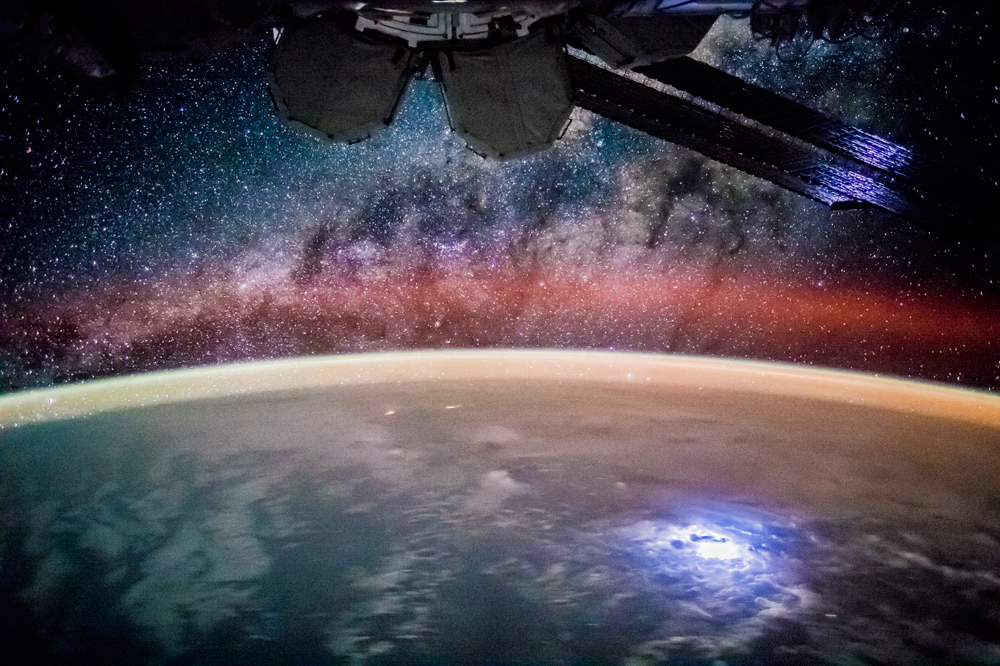Backup Lightning Imaging Sensor to Finally Get Its Day in Space

A backup copy of an imaging instrument that launched into space in 1997 is getting its chance to fly.
The Lightning Imaging Sensor (LIS) is scheduled to launch to the International Space Station on Saturday (Feb. 18) on the 10th SpaceX cargo resupply mission for the agency. If all goes according to plan, this imaging tool will be mounted on the exterior of the orbiting lab so it can capture real-time observations of lightning strikes on Earth, NASA officials said in a statement.
This instrument that is headed to the station on Saturday was built as a backup to the original LIS instrument, which launched in 1997 aboard the Tropical Rainfall Measuring Mission (TRMM) and collected lightning data for 17 years before being shut down. [Photos: Earth's Lightning Seen from Space]
"The LIS used in this follow-on mission is an exact duplicate of the sensor used on TRMM," Richard Blakeslee, science lead for the LIS at NASA's Marshall Space Flight Center, said in a statement from the agency. "But it will sample lightning over a wider geographical area."
The TRMM satellite orbited Earth between 35 degrees north latitude and 35 degrees south latitude, so the original LIS could observe only the planet's tropical regions. The space station, however, has a higher orbital inclination and therefore provides a vantage point that will allow the LIS to observe areas closer to the poles in the Northern and Southern hemispheres, NASA officials said.
The LIS is scheduled for a two-year mission on the orbiting lab, during which time it will measure the "amount, rate and optical characteristics of lightning on Earth," NASA officials said in the statement. The imaging tool will also study the connection between lightning and other severe weather events, like convective storms and tornadoes.
Mounting the LIS to the exterior of the space station allows for observations to be downloaded in real time and used to improve weather forecasts and storm preparedness around the globe. The data collected from the LIS will be used in conjunction with observations from the Geostationary Lightning Mapper — a weather instrument recently launched on the National Oceanic and Atmospheric Administration's (NOAA) GOES-16 satellite.
Get the Space.com Newsletter
Breaking space news, the latest updates on rocket launches, skywatching events and more!
"The space-based vantage point allows us to observe all forms of lightning over land and sea, 24 hours a day," Blakeslee said in the statement. "The orbit of the space station will allow LIS to look at lightning distributions over different times of the day, further enhancing our knowledge of the complicated dynamics of lightning."
You can watch SpaceX's launch webcast live here Saturday beginning at 8:30 a.m. EST (1530 GMT), courtesy of NASA and SpaceX. Liftoff is set for 10:01 a.m. EST (1501 GMT).
Follow Samantha Mathewson @Sam_Ashley13. Follow us @Spacedotcom,Facebook and Google+. Original article on Space.com .
Join our Space Forums to keep talking space on the latest missions, night sky and more! And if you have a news tip, correction or comment, let us know at: community@space.com.

Samantha Mathewson joined Space.com as an intern in the summer of 2016. She received a B.A. in Journalism and Environmental Science at the University of New Haven, in Connecticut. Previously, her work has been published in Nature World News. When not writing or reading about science, Samantha enjoys traveling to new places and taking photos! You can follow her on Twitter @Sam_Ashley13.











